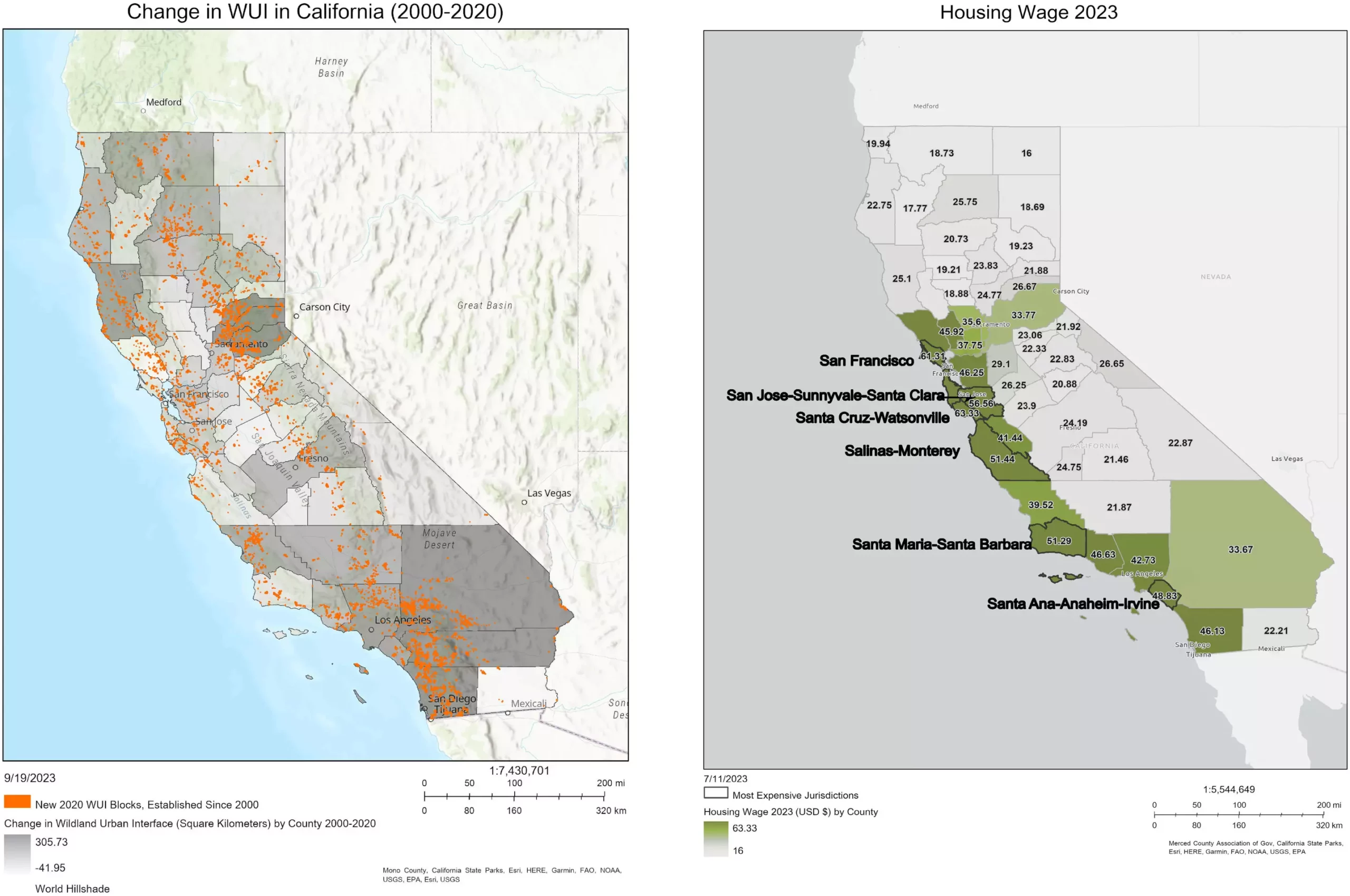The escalating crisis of affordable housing in California has become a focal point for researchers studying its far-reaching implications. The recent article published in the Proceedings of the National Academy of Sciences by UC Santa Cruz researchers sheds light on an alarming trend: the growing Wildland-Urban Interface (WUI). This concept refers to areas where urban development meets natural landscapes, a phenomenon that has proliferated since the 1990s. With over a third of California’s households now positioned adjacent to these wildlands, the urgent question arises—how is the housing crisis contributing to the development of these high-risk areas and, in turn, exacerbating environmental challenges?
California is facing dual challenges—an acute housing crisis and rampant WUI development. This juxtaposition makes the state an ideal case study for understanding how urban housing dynamics can intertwine with environmental concerns. The scale of development in the WUI is unprecedented in the United States and poses significant risks for climate-induced natural disasters such as wildfires, floods, and landslides. With WUI areas being particularly vulnerable, understanding the drivers behind their growth is crucial.
Miriam Greenberg, the lead author of the study, advocates for a comprehensive approach that incorporates social science methodologies alongside ecological perspectives. She argues that the evident connection between housing dynamics and environmental issues has been largely overlooked in past studies. By examining the culprits behind increased WUI development, Greenberg aims to unveil the significance of socio-economic factors that have led to this worrying trend.
Historically, individuals moved to WUI areas for reasons rooted in personal ties to the land or a desire for proximity to nature. However, the researchers propose that the housing crisis has shifted motivations. Rising property prices in urban locations are compelling a diverse demographic to move to WUI zones as they seek affordable living options. This migration trend surfaces important socio-economic issues, as it may contribute to inequality within these communities. The ongoing research is poised to elucidate these dynamics, focusing on different WUI types—from interface developments sprawling out from urban centers to intermix developments nestled deeper in natural surroundings.
The study anticipates uncovering that WUI interface areas might attract middle-income commuters, while remote intermix regions could display stark inequality, characterized by a mix of affluent estates and informal living setups. These socio-economic disparities are crucial to understanding how residents navigate risks associated with climate change.
One of the paper’s central arguments highlights how disparities in resources and knowledge exacerbate the vulnerability of lower-income residents in WUI areas. Although all residents face similar threats from climate-related disasters, their varied socio-economic statuses significantly influence their capabilities to prepare for and recover from crises. For instance, residents who move to WUI zones primarily for affordability may lack the necessary resources or familiarity with their new environment, leaving them more susceptible to devastation during disasters.
This inequitable landscape suggests that the pursuit of affordable housing is not simply an urban issue but is intrinsically linked to sustainability and environmental justice. As the research posits, addressing the affordability crisis will have critical implications for the overall resilience of communities navigating the realities of climate change.
To further investigate these issues, the research employs a mixed-methods approach incorporating surveys, ethnographic interviews, and analysis of census data in conjunction with WUI mapping and ecology. Conducted along California’s Central Coast—one of the least affordable housing markets in the nation—this research aligns community partners and academic expertise to glean insights into the relationship between affordable housing and WUI development.
The study also aims to explore Indigenous land stewardship practices, habitat restoration, and prescribed burning within the context of WUI growth. By integrating diverse perspectives and local knowledge systems, the research could illuminate holistic strategies for addressing both housing affordability and environmental resilience.
Ultimately, UC Santa Cruz’s research stresses the need to reevaluate affordable housing as a crucial sustainability challenge. The growing intersection of urban planning and environmental policy necessitates a coordinated approach across state and federal levels. Recognizing that affordable housing is pivotal not just within urban centers but also in the periphery will be critical in reducing risks associated with climate change. This integrated lens will empower stakeholders to envision urban sustainability that transcends city limits, ensuring that communities can navigate the complexities of affordable living and ecological resilience together.
To mitigate the ramifications of the California housing crisis, action must extend beyond traditional urban planning. The outcomes of this research could represent a vital step in rethinking how we approach housing, environmental justice, and long-term community sustainability amidst the ever-increasing impacts of climate change.

